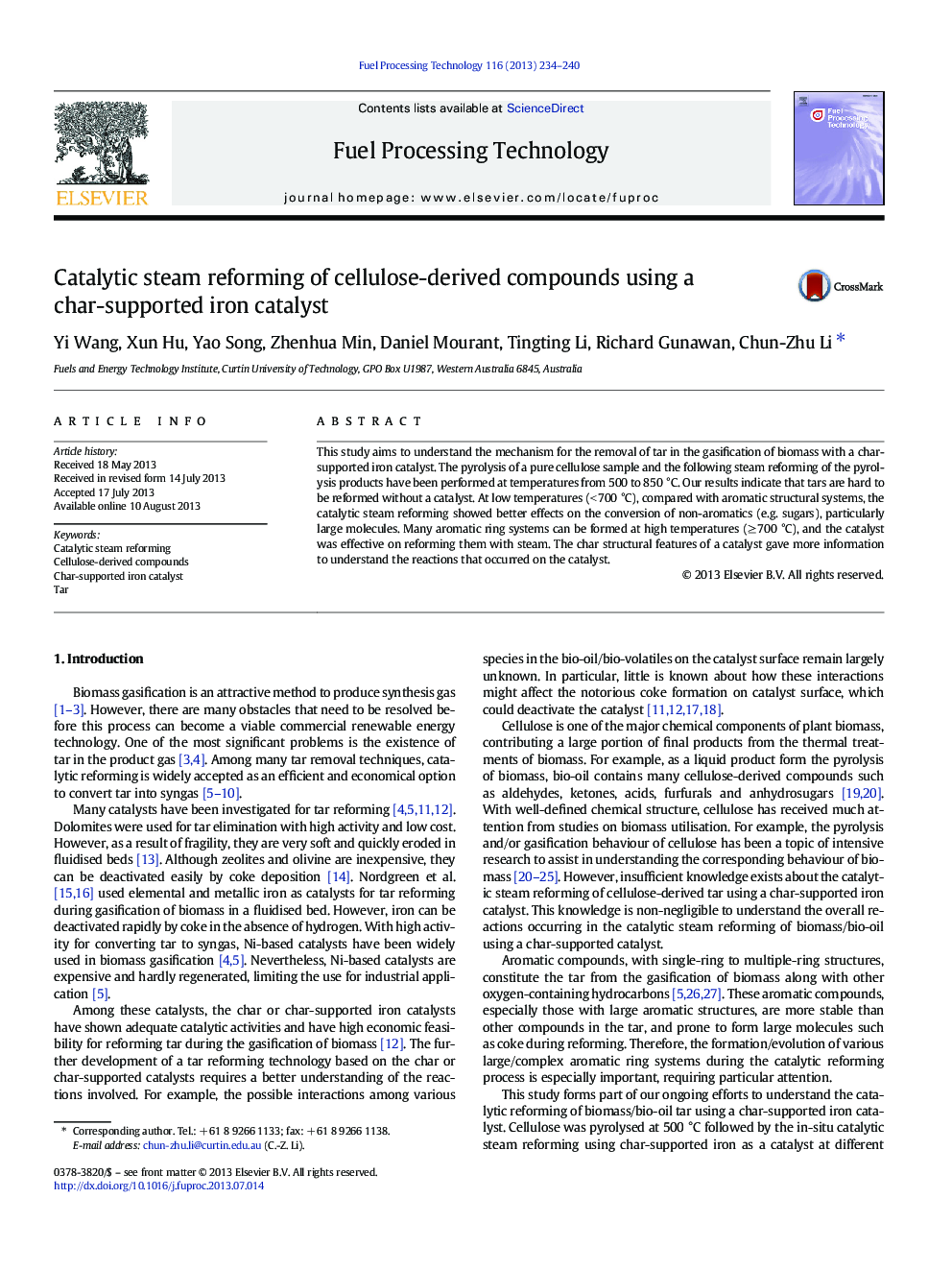| Article ID | Journal | Published Year | Pages | File Type |
|---|---|---|---|---|
| 6657376 | Fuel Processing Technology | 2013 | 7 Pages |
Abstract
This study aims to understand the mechanism for the removal of tar in the gasification of biomass with a char-supported iron catalyst. The pyrolysis of a pure cellulose sample and the following steam reforming of the pyrolysis products have been performed at temperatures from 500 to 850 °C. Our results indicate that tars are hard to be reformed without a catalyst. At low temperatures (< 700 °C), compared with aromatic structural systems, the catalytic steam reforming showed better effects on the conversion of non-aromatics (e.g. sugars), particularly large molecules. Many aromatic ring systems can be formed at high temperatures (â¥Â 700 °C), and the catalyst was effective on reforming them with steam. The char structural features of a catalyst gave more information to understand the reactions that occurred on the catalyst.
Keywords
Related Topics
Physical Sciences and Engineering
Chemical Engineering
Chemical Engineering (General)
Authors
Yi Wang, Xun Hu, Yao Song, Zhenhua Min, Daniel Mourant, Tingting Li, Richard Gunawan, Chun-Zhu Li,
